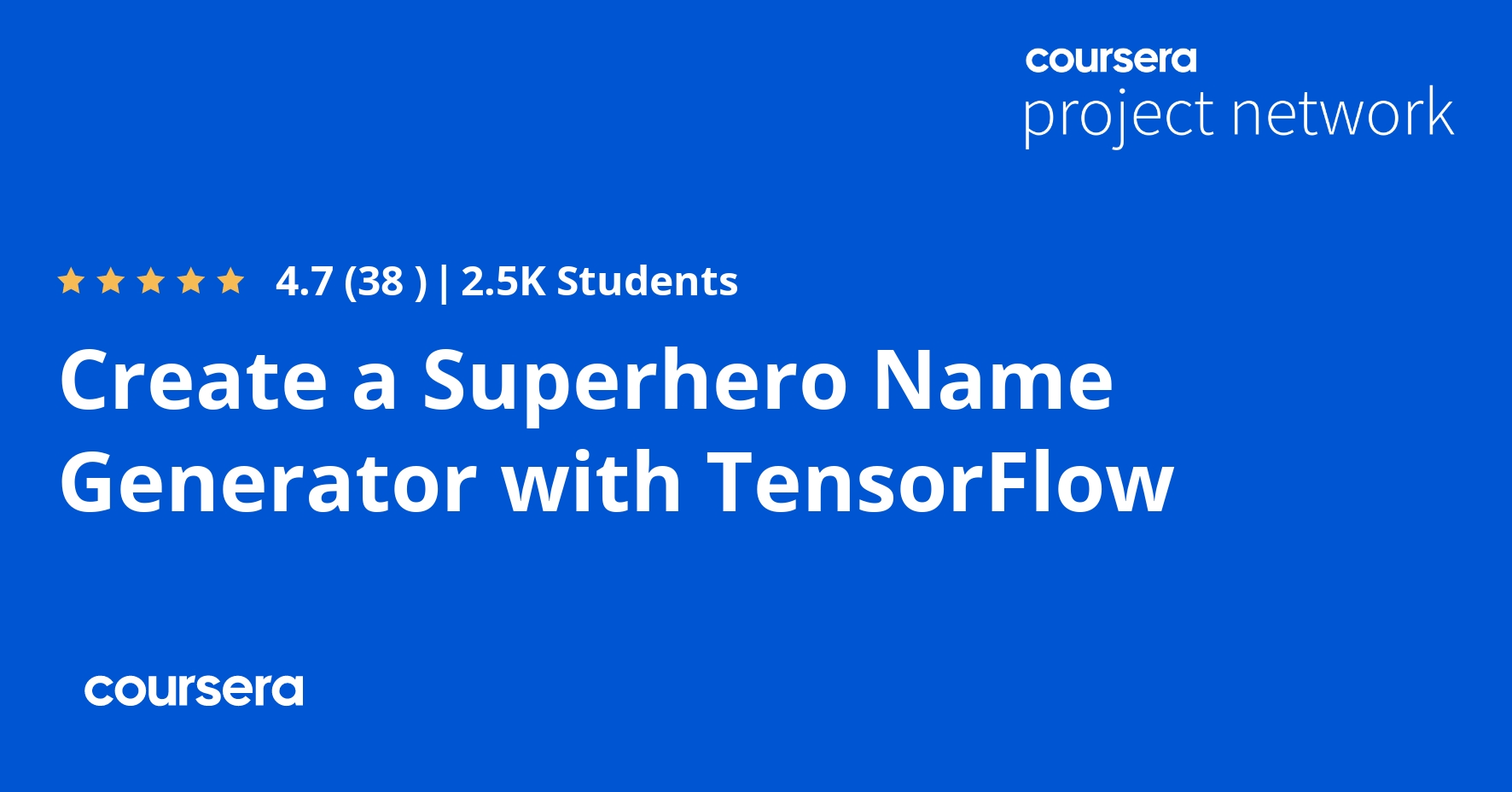

- #Tensorflow data generator how to#
- #Tensorflow data generator install#
- #Tensorflow data generator full#
just use pip install Data-GeneratorĬurrently, these Python's datatypes are supported: int, str, float, datetime.datetime.
#Tensorflow data generator how to#
What things you need to install the software and how to install them. These instructions will get you a copy of the project up and running on your local machine for development and testing purposes. json files.ĭata are created using CLI commands or via TOML file specification.
#Tensorflow data generator full#
In case you want the full code of the classification task at hand along with prediction on unseen data, here is the repository for your reference.Create dataset with random data of datatypes int, float, str, date (more precisely python's datetime.datetime) and timestamp (as float).ĭata can be exported to. Validation_data = test_set,# the test setĪnd that’s it!! Once you know it, it’s simple enough to reuse it later. classifier.fit_generator(training_set,# the training set fit_generator method off of the model with some additional parameters. After the model architecture is complete, you have to call the. Training a model using ImageDataGenerator is simple. class_mode is changed to ‘binary’ from ‘categorial’ because the task in hand is a binary classification problem and not a multiclass one.target_size is changed from default as the images in the dataset do not match the default argument.I suggest you introspect it yourself and try to understand the possible reasons for the same. Augmentation is done exclusively on the training dataset but not the test set.Go over this code block, you will find many augmentation methods used on the training set which were discussed briefly in this tutorial. Test_set = test_datagen.flow_from_directory('dataset/test_set', Training_set = train_datagen.flow_from_directory('dataset/training_set', Test_datagen = ImageDataGenerator(rescale = 1./255)

See the Python code given below: train_datagen = ImageDataGenerator(rescale = 1./255, Target_sizei.e the dimensions of images to expect ( default = (256,256) ).īatch_sizei.e how many images to prepare in a single batch (default = 32 ).Ĭlass_modei.e the type of classification problem involved (default=’categorical’ ).
.png)
In case you need a comprehensive explanation about image augmentation, I advise you have a look at this repository Some of the augmentation techniques include horizontal and vertical flipping, cropping of images, shifting of images, etc. It generates batches of tensor image data with real-time data augmentation. So what are Data Generators or Image Data Generators?Įssentially, it is a class under Keras which is very useful in the field of image processing. In this tutorial, we focus on how to build data generators for loading and processing images in Keras and save the day. This problem has become very common and is already one of the challenges in the field of computer vision where large datasets of images are processed. If you have ever tried to train a neural network, you probably have encountered a situation where you try to load a dataset but there is not enough memory in your machine.


 0 kommentar(er)
0 kommentar(er)
